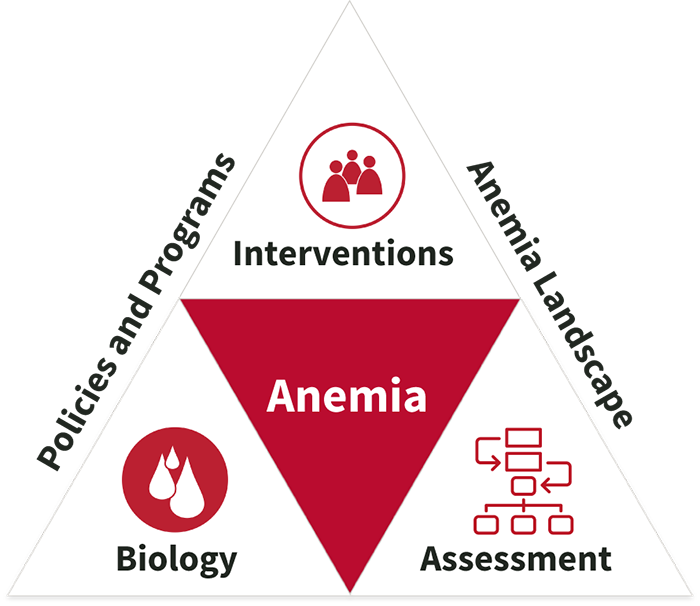Anemia is a public health concern disproportionately affecting young children, pregnant women, and women of reproductive age. The Global Burden of Disease Study estimates that iron deficiency anemia and thalassemia are the leading anemia causes worldwide.
While anemia is prevalent around the world, the underlying causes differ among different populations and regions. A “one size fits all” approach does not exist, and implementation of strategies to reduce anemia depend on the main causes of anemia, and the financial and technical capacity of each country.
We found 93 resource(s)
Translating Formative Research Findings into a Behaviour Change Strategy to Promote Antenatal Calcium and Iron and Folic Acid Supplementation in Western Kenya
Journal Article published by Maternal and Child Nutrition in
This study involved in-depth interviews with 22 pregnant and postpartum women and 20 community-based and facility-based health workers in Kenya for the purposes of planning a calcium and iron–folic acid supplementation program. Interviews assessed awareness of anemia, preeclampsia, and eclampsia; ANC attendance; and barriers and facilitators to…
The Global Burden of Anemia
Literature Review published by Hematology/Oncology Clinics in
This article provides a framework for understanding the population-specific epidemiology and pathophysiology of anemia globally. The authors used the systematic approach of the Global Burden of Diseases, Injuries, and Risk Factors 2013 study to elucidate levels and trends of anemia-related disability. The study includes estimates of prevalence and…
The Proportion of Anemia Associated with Iron Deficiency in Low, Medium, and High Human Development Index Countries: A Systematic Analysis of National Surveys
Systematic Review published by Nutrients in
This article presents findings from a meta-analysis assessing the proportion of anemia that is attributable to iron deficiency. Data from 23 countries was pooled for pre-school children and non-pregnant women of reproductive age and the proportion of anemia attributable to iron deficiency was estimated by region, inflammation exposure, anemia…
National Anemia Profiles
Country Profile published by SPRING in
These profiles provide a snapshot of country-specific national anemia profiles developed by SPRING. Each profile provides information on:
the causes and burden of anemia,
the policy environment,
program indicators that allow monitoring progress against anemia targets.
The Global Prevalence of Anaemia in 2011
Technical Report published by World Health Organization in
This WHO report describes estimates of the prevalence of anemia for the year 2011 in preschool-age children (6–59 months) and women of reproductive age (15–49 years), by pregnancy status and by regions of the United Nations and WHO, as well as by country.
Controlling Maternal Anemia and Malaria
Brief published by MCSP in
This brief describes WHO recommendations for intermittent preventive treatment of malaria in pregnancy to prevent iron deficiency anemia in sub-Saharan Africa countries, and emphasizes the importance of providing the correct dose of folic acid to maximize the effectiveness of interventions to prevent malaria. The brief is of particular relevance…
Iron Deficiency Anaemia in Pregnancy: The Role of Parenteral Iron
Literature Review published by Journal of Obstetrics and Gynaecology in
This review presents evidence on the impact on maternal mortality of iron–folic acid supplementation from observational studies that were analyzed for the Global Burden of Disease analysis in 2004, and summarizes the evidence from other reviews on this topic.
A Systematic Analysis of Global Anemia Burden from 1990 to 2010
Literature Review published by Blood in
This study presents estimates for mild, moderate, and severe anemia from 1990 to 2010 for 187 countries, both sexes, and 20 age groups. The authors performed cause-specific attribution to 17 conditions using data from the Global Burden of Diseases, Injuries, and Risk Factors 2010 study.



